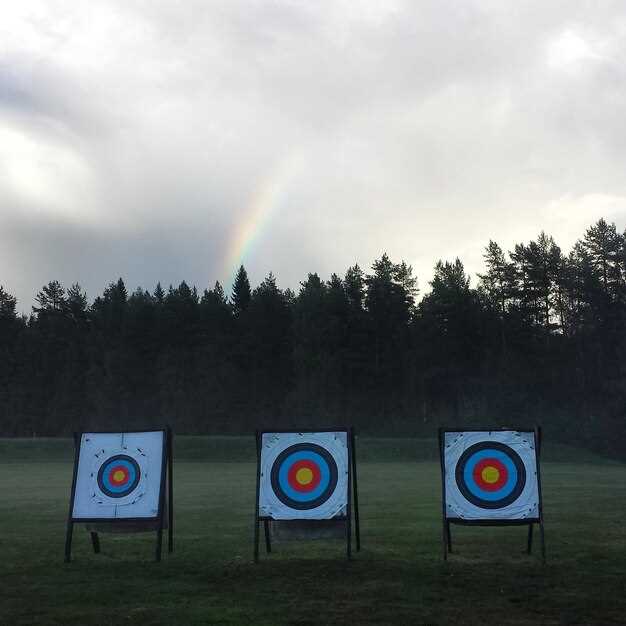
When it comes to improving your archery skills, having the right targets is crucial. Backyard practice offers an excellent opportunity to hone your shooting technique, and selecting the best archery targets can make a significant difference in your training sessions. In this guide, we will explore various types of blocks and targets that cater to different skill levels and preferences, ensuring that your practice is both efficient and enjoyable.
Understanding the various options available in the market is essential for enhancing your archery experience. There are foam blocks, bag targets, and 3D targets, each with unique features designed to absorb arrows effectively and withstand repeated use. Selecting the right kind of targets will not only improve your accuracy but also expand your range of practice scenarios, making your sessions more engaging.
As you embark on your path to becoming a better archer, consider the factors that influence the effectiveness of your practice. The choice of archery targets, coupled with proper installation and maintenance, can lead to enhanced shooting precision and longer-lasting equipment. In the following sections, we will delve deeper into the best options available, ensuring that your backyard practice becomes a valuable part of your archery journey.
Choosing the Right Foam Block Targets for Your Needs

When it comes to archery practice, selecting the appropriate targets is crucial for honing your skills. Foam block targets are a popular choice due to their versatility and effectiveness. However, not all foam targets are created equal, and understanding your specific needs can help you make the right decision.
Durability is one of the key factors to consider. Look for foam targets that are designed to withstand repeated shots without deteriorating quickly. Higher density foam often provides better longevity, ensuring that your practice sessions are productive over an extended period.
Additionally, consider the target size. If you’re a beginner, a larger target may give you a better chance to hit your mark, boosting confidence. Conversely, more advanced archers may prefer smaller targets to challenge their accuracy. Choose a size that matches your skill level while allowing room for improvement.
Another important aspect is stopping power. High-quality foam targets should effectively stop arrows without significant penetration. This feature not only prolongs the life of the target but also ensures safety during practice. Test different brands to find one that suits your bow type and arrow weight.
Finally, consider additional features such as multifunctionality. Some foam block targets have printed scoring zones or even different shooting faces, allowing for varied practice routines. This can help you develop different facets of your archery skills, from precision shooting to quick draw accuracy.
In summary, choosing the right foam block targets for your needs involves evaluating durability, size, stopping power, and additional features. By taking these factors into account, you can enhance your backyard practice sessions and achieve greater success in your archery pursuits.
Maintenance Tips for Longevity of Your Archery Targets

To ensure the longevity of your archery targets, it is essential to regularly inspect and maintain them. Start by checking the integrity of the target material. If you notice any signs of wear, such as fraying or tears, take immediate action to repair them. Most targets, like the foam blocks, can be patched using specialty adhesives designed for target repair, ensuring they remain functional for practice.
Storage is another critical aspect of target maintenance. When not in use, store your targets in a dry, sheltered location to protect them from weather damage. Prolonged exposure to rain, sun, or extreme temperatures can degrade materials quickly. If your targets are portable, consider using a protective cover or tarp when left outside for extended periods.
When practicing, place your targets on a stable platform to prevent movement. Uneven surfaces can lead to uneven wear and tear, resulting in decreased performance. Additionally, avoid shooting at the same spot repeatedly on your blocks; rotating the targets or adjusting their positions can help distribute impact and prolong their lifespan.
Regular cleaning is also vital. Remove dirt or debris from the target surface to prevent corrosion or deterioration of the materials. Depending on the target type, a simple hose down or a gentle scrub with mild soap can help keep them in optimal condition.
Lastly, consider the types of arrows you are using. Heavy or broadhead arrows can wear down targets more quickly. If you plan to use these types of arrows, choose targets designed to handle them, potentially increasing the time between replacements.
Maximizing Accuracy with Target Placement and Setup
To enhance your archery skills and improve accuracy, the placement and setup of your targets are crucial. Positioning your target correctly can greatly influence your shooting consistency and performance.
Start by choosing a suitable location in your backyard that is safe and offers an ample distance for practice. Ensure the area is free from obstructions and provides a clear line of sight to the targets. Ideally, set your target at a distance that matches your archery skill level. Beginners might prefer shorter distances, while advanced archers should aim for longer ranges to challenge their abilities.
Consider using blocks as your target material. Archery blocks are highly effective and provide significant stopping power for arrows, minimizing the risk of damage or injury. When setting up the block, make sure it is stable and secure, ensuring it will not topple over with each shot.
It’s important to adjust the height of your targets to align with your shooting stance. Aiming to have the center of the target at eye level will allow for better alignment and reduce strain while shooting. Additionally, regularly assess the target for wear and tear; a well-maintained target will deliver a more consistent shooting experience.
Lastly, always take into account environmental factors such as wind and sunlight. Positioning your targets in an area where the wind is less likely to affect flight patterns can significantly impact your accuracy. By carefully considering these elements, you will create an effective setup for your backyard practice sessions.


